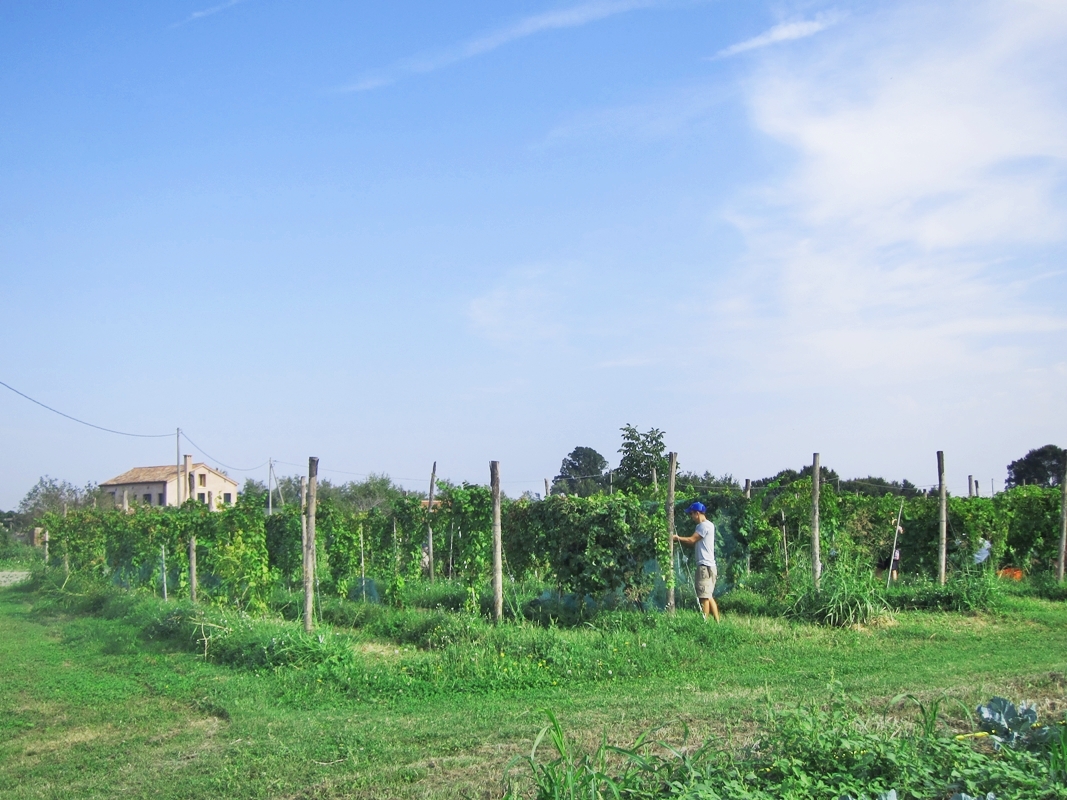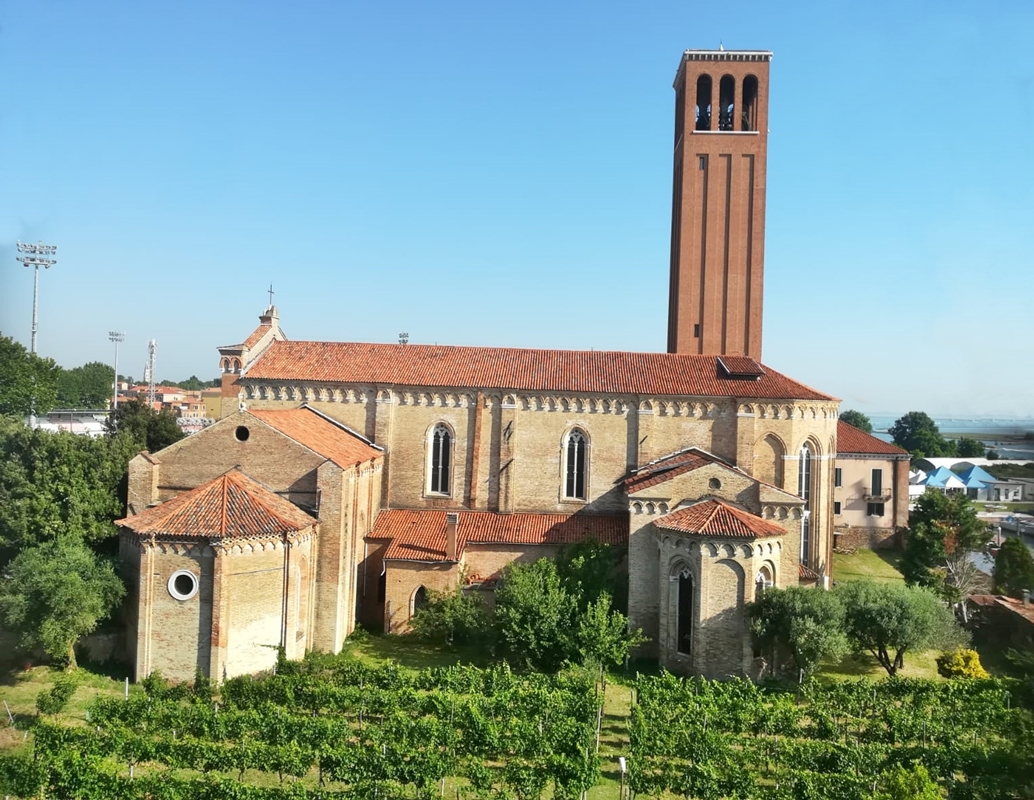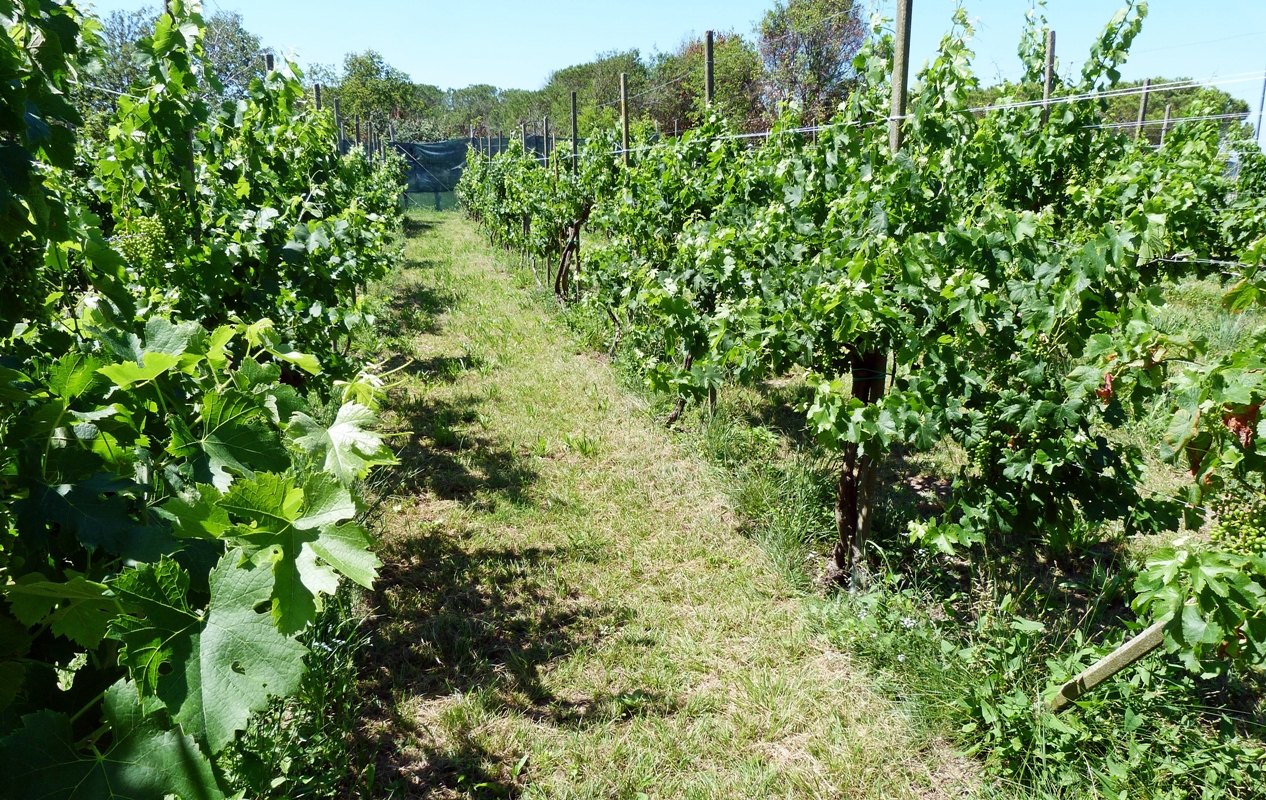The primary purpose of l’associazione Laguna nel bicchiere (The Lagoon in a Glass Association) is the recovery of the vineyards located in the historic centre of Venice and in the Estuary.
Therefore, over the years the association has taken care of vineyards in several parts of the region, without ever being the owner. Many vineyards were used in collaboration with the owners and eventually returned to them. This occurred at the convents of San Francesco della Vigna (Saint Francis of the Vineyard) and of the Scalzi (barefoot brothers and nuns), at the vineyard of the restaurant “Corte Sconta”, at the pergola of the Tana and at the vineyard of Malamocco. The Tana Sconta wine was produced with the grapes from the Tana vineyards, while the Arcangeli Scalzi (Barefoot Archangels’) wine was produced with the Scalzi grapes..
Currently the association cultivates the vineyards of the former Camaldolese convent on the island of San Michele, those near the church of Sant’Elena, those at the rest home of the IPAV (formerly I.R.E.) in Giudecca and a vineyard on Vignole. It also produces Bacò wine thanks to grapes harvested from the vines of the pizzeria “Alle Streghe” in Barbaria delle Tole.
A special thanks goes to those who, in recent years and with their technical knowledge, have ensured that the quality of our wines has significantly improved. In particular, we remember the Dalla Ore Winery in Trissino (VI), Luigi Antonioli “Miracol”, Gianantonio Posocco, Alfio Lovisa and Arte della Vigna di Pavia di Udine.








